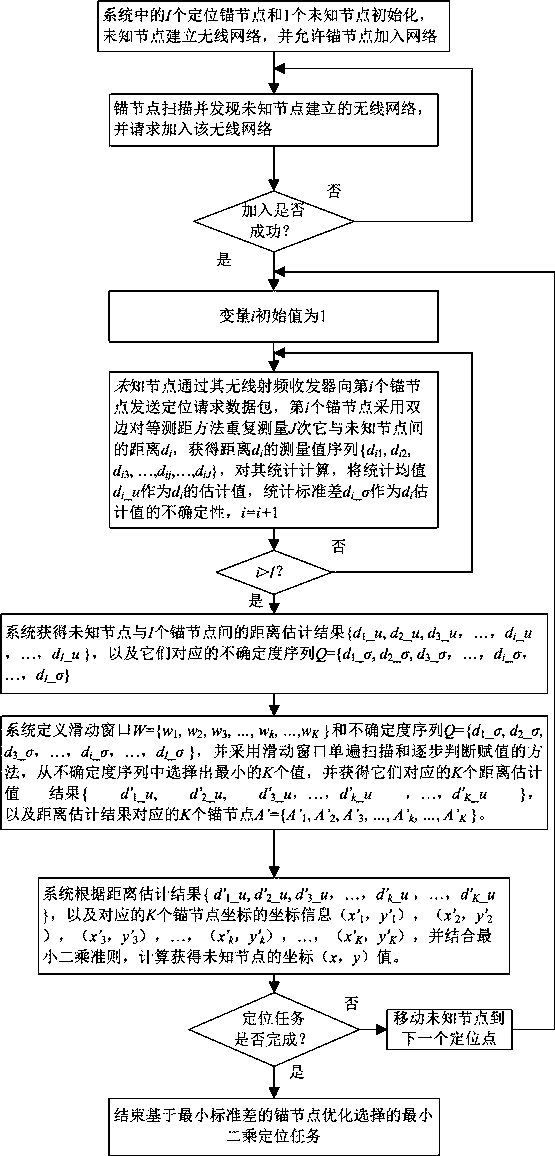Least squares positioning method of anchor node optimization selection based on minimum standard deviation
An optimization selection and least squares technology, applied in the direction of location information-based services, positioning, measuring devices, etc., can solve problems such as low positioning accuracy and communication distance estimation error
- Summary
- Abstract
- Description
- Claims
- Application Information
AI Technical Summary
Problems solved by technology
Method used
Image
Examples
specific Embodiment approach 1
[0027] Specific implementation mode one: combine figure 1 To illustrate this embodiment, a least-squares positioning method based on minimum standard deviation optimal selection of anchor nodes described in this embodiment includes the following steps:
[0028] Step 1. There are I+1 wireless sensor nodes in the system, which are respectively I anchor nodes A={A 1 ,A 2 ,A 3 ,...,A i ,...,A I} and 1 unknown node, they all have nanoLOC radio frequency transceivers, and can use the bilateral peer-to-peer method to measure the estimated distance between any two nodes, where i is a positive integer, and 1≤i≤I, I is A positive integer set by the user, and 4≤I≤15, the value of I is 10 in the present invention;
[0029] Step 2. Each node in the system is initialized. The unknown node first establishes a wireless network and waits for other nodes to apply to join the network;
[0030] Step 3, after 1 anchor node is initialized successfully, use the radio frequency transceiver to s...
specific Embodiment approach 2
[0048] Specific embodiment 2. This embodiment is a further description of the least squares positioning method based on the minimum standard deviation of the anchor node optimal selection described in specific embodiment 1. In this embodiment, a dynamic sliding window and a single pass The scanning method can efficiently select the ones with the smallest statistical standard deviation in the distance estimation standard deviation sequence, providing support for the optimal selection of anchor nodes.
specific Embodiment approach 3
[0049] Specific embodiment 3. This embodiment is a further description of the least squares positioning method based on the minimum standard deviation of the anchor node optimal selection described in the specific embodiment 1. In this embodiment, the method based on the minimum statistical standard deviation is adopted. The optimal selection of anchor nodes reduces the impact of distance estimation errors on least squares positioning and achieves high-precision least squares positioning.
PUM
 Login to View More
Login to View More Abstract
Description
Claims
Application Information
 Login to View More
Login to View More - Generate Ideas
- Intellectual Property
- Life Sciences
- Materials
- Tech Scout
- Unparalleled Data Quality
- Higher Quality Content
- 60% Fewer Hallucinations
Browse by: Latest US Patents, China's latest patents, Technical Efficacy Thesaurus, Application Domain, Technology Topic, Popular Technical Reports.
© 2025 PatSnap. All rights reserved.Legal|Privacy policy|Modern Slavery Act Transparency Statement|Sitemap|About US| Contact US: help@patsnap.com



